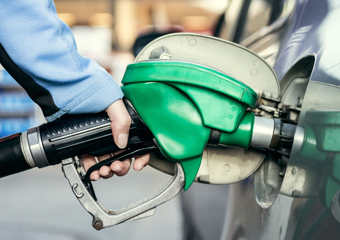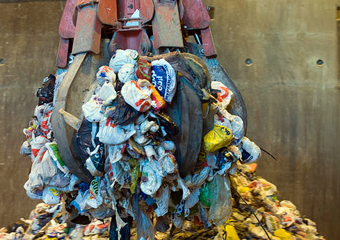
Dam at Nesjøen lake in Tydal Municipality in Trøndelag County in Norway.
Mythbusting: "Power companies are only concerned with profit!"
Owners of solar and wind power plants produce energy when the sun shines and the wind blows – regardless of price and demand. Hydropower companies with large reservoirs can control production to a greater extent. Does this mean they can also control prices?
Power companies are often portrayed in the media as greedy and manipulative. Is it true that producers only control hydropower production to make the most profit? And do they manipulate prices by draining the reservoirs?
Production planner Aslak Mæland in Statkraft responds to some often repeated claims.

1: "The power companies are only concerned with their own profits, not the needs of customers."
Answer: We are committed to producing when there is a need for power. It is a major social responsibility to manage society's energy resources, and the goal of achieving the highest possible price for power coincides with what is economically optimal for society. We use price as a control signal to produce hydropower when demand is highest.
2: "The power plants produce electricity even when there is little water in the reservoirs, just so the companies can earn the most."
Answer: The goal of hydropower producers is to make the best possible use of the energy resources. We do this by saving water when demand and prices are low, and then producing as much as possible when demand and prices increase. Whether we produce today or not depends on how we see future price trends and water levels in the reservoirs. If we believe the situation calls for it, we can therefore produce power even though there is little water left in the reservoirs.
3: "Power plants drain the reservoirs to create scarcity and get higher power prices."
Answer: Normally we produce a lot of power in the winter, using the water that filled up during the summer. We use power prices as a control signal to produce, but do not manage production to influence the price. The level of water in the reservoirs is dependent on both snow melting and precipitation, over which we have little control.
4: "If the power plants filled up the reservoirs, we would have lower electricity prices in the winter."
Answer: Normally we want to have as much water as possible in the reservoirs before winter, but where we have limited storage capacity, we often need to produce electricity even at relatively low prices throughout the summer. Where we have larger reservoirs, on the other hand, we can save water for tougher times.
The key for us is to focus on best possible utilization of water resources and to ensure we have enough water in the reservoirs to be able to produce at full capacity when demand and power prices are at their peak. If we were to guarantee maximum filling of the reservoirs at the start of the winter, we would have had a significantly higher likelihood of water losses. This would in turn lead to higher prices in the summer.
5: "The power companies sell clean Norwegian hydropower abroad, while we have to buy back dirty coal and nuclear power."
Answer: Norway is part of a Nordic and European power market where energy from hydropower, nuclear, wind and thermal sources is bought and sold across national borders. This contributes to greater socio-economic benefits for all countries and helps secure access to necessary energy resources throughout the year.
Power producers receive the Norwegian power price regardless of the power stays in Norway or flows out of the country.
6: "If we had not sold our hydropower abroad, we could be self-sufficient with cheap Norwegian electricity."
Answer: In theory, Norway could be self-sufficient in nine out of ten years, but we are vulnerable to large variations in precipitation and snow melting. This is why Norway, like other countries, is both an importer and exporter of energy. It provides security and predictability.

Aslak Mæland
Aslak Mæland is Vice President Asset Ownership Nordics. This is a part of Statkraft's business area Markets.
More mythbusting ...

Mythbusting: "Electric cars are no more climate-friendly than ordinary cars!"
An electric car that uses electricity from clean, renewable sources produces no greenhouse gas emissions. A petrol-powered vehicle emits on average two tonnes of CO2 each year, yet some people still...
Read more

Mythbusting: "Power companies are only concerned with profit!"
Owners of solar and wind power plants produce energy when the sun shines and the wind blows – regardless of price and demand. Hydropower companies with large reservoirs can control production to a...
Read more

Mythbusting: "Production of biofuels displaces rainforests"
Did you know that most of our cars are already using biofuels? But how sustainable and climate-friendly are biofuels actually? It depends on the raw material used to produce the biofuel.
Read more

Mythbusting: "Burning waste to produce district heating is not climate-friendly"
Surplus heat from waste incineration is the largest energy source for district heating in Norway. So this cannot be particularly climate-friendly, or can it?
Read more